Abstract
This study uses a curve-fitting approach to evaluate the effects of drugs on reinforced responding in rats. The subjects obtained reinforcement according to a series of five different variable-interval schedules (a five-component multiple schedule). For each rat, pimozide, a neuroleptic, decreased response rate, and the decrease was associated with (1) a decrease in the estimated asymptotic response rate and (2) an increase in the rate of reinforcement necessary for half-asymptotic responding. That is, pimozide decreased the proportion of responding maintained by a given rate of reinforcement. In contrast, intermediate doses of amphetamine increased response rate and increased the proportion of responding maintained by a given rate of reinforcement. It was proposed that the response rate asymptote indexes motor capacity, and the rate of reinforcement necessary for half-asymptotic responding indexes reinforcement efficacy; accordingly, pimozide decreased motor capacity and reinforcement strength and amphetamine increased reinforcement strength.
Full text
PDF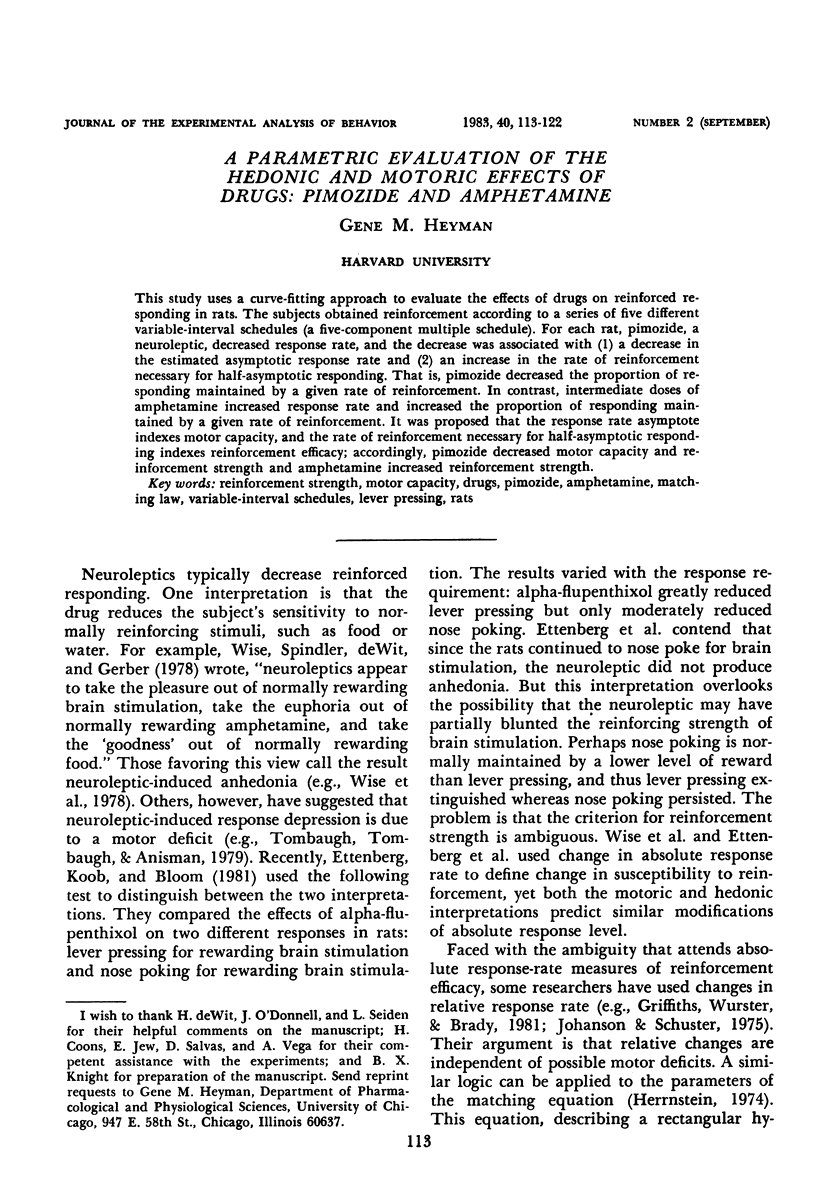
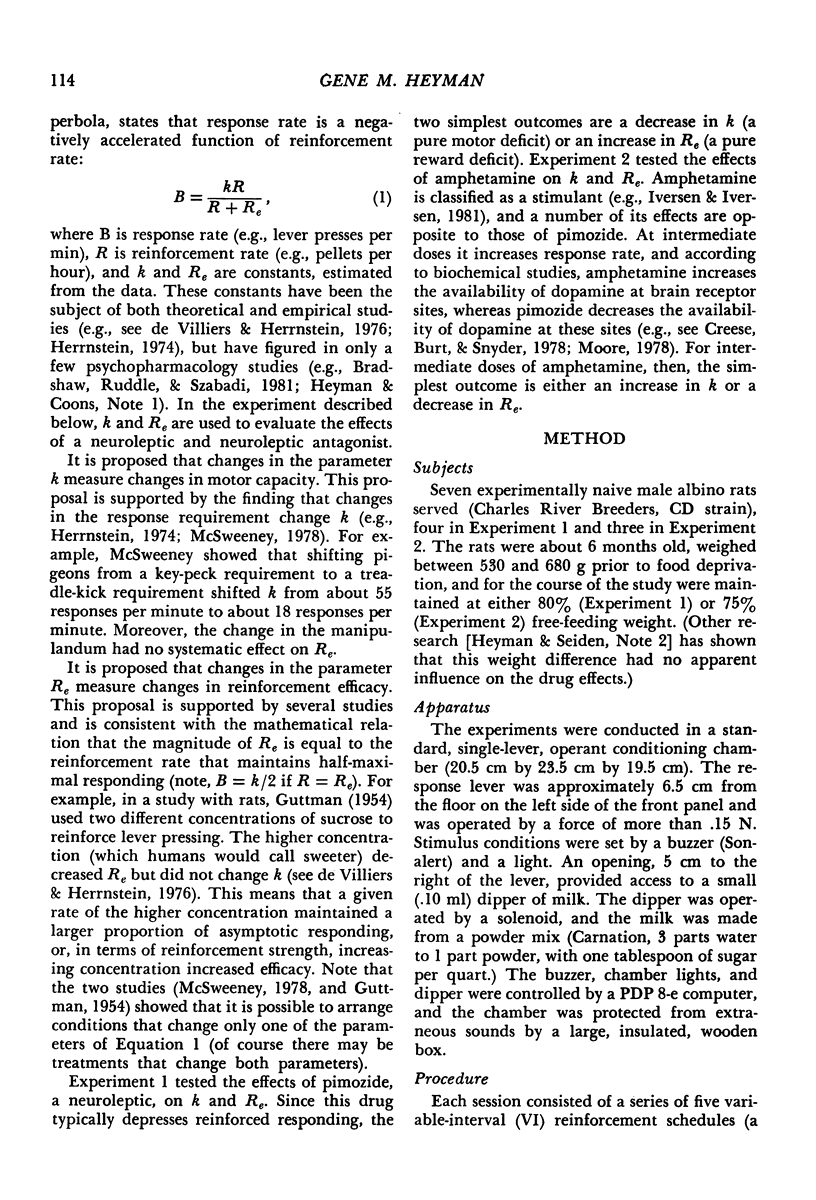

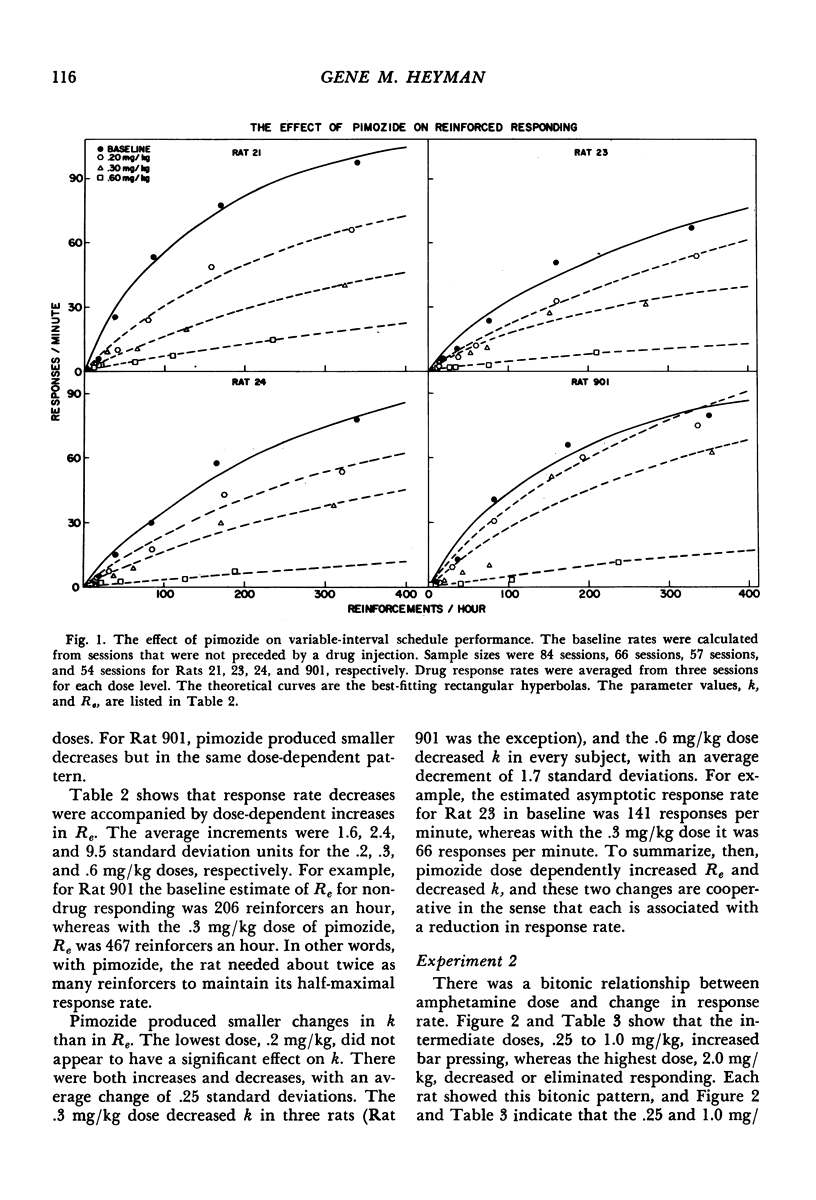


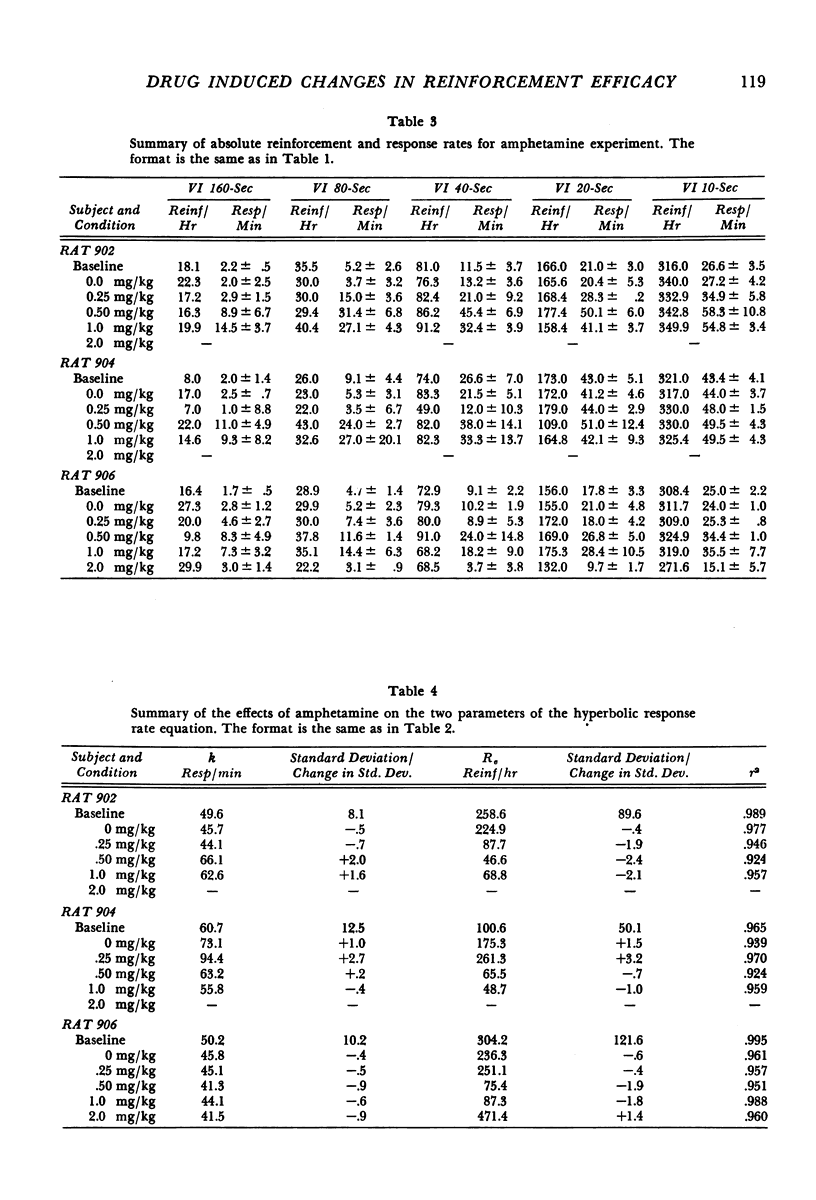
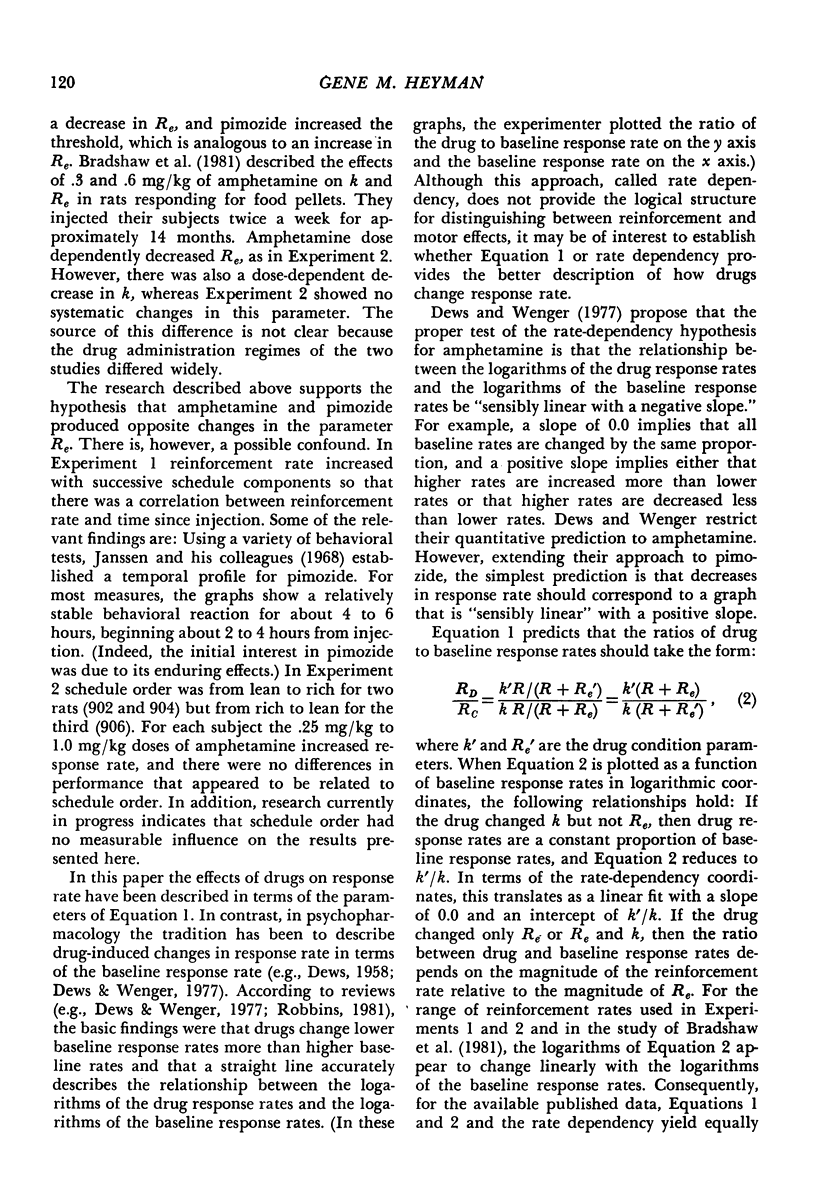
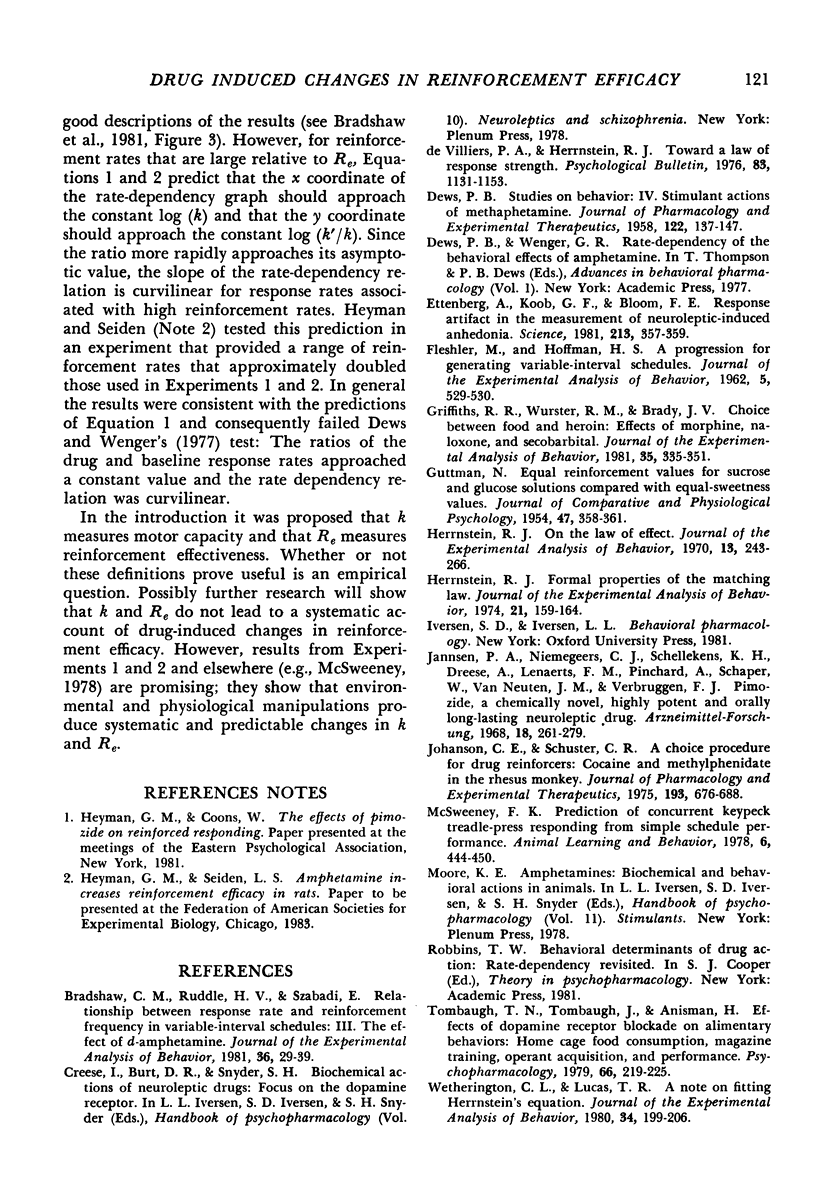
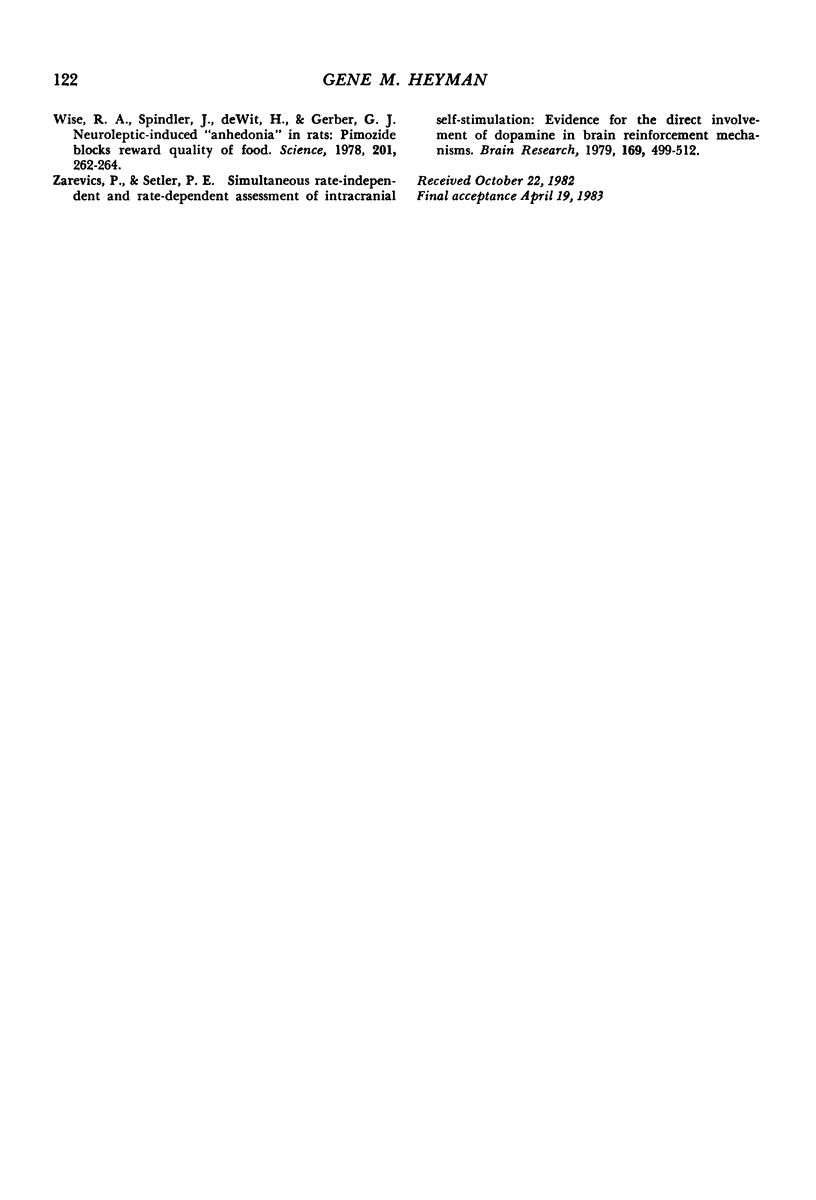
Selected References
These references are in PubMed. This may not be the complete list of references from this article.
- Bradshaw C. M., Ruddle H. V., Szabadi E. Relationship between response rate and reinforcement frequency in variable-interval schedules: III. The effect of d-amphetamine. J Exp Anal Behav. 1981 Jul;36(1):29–39. doi: 10.1901/jeab.1981.36-29. [DOI] [PMC free article] [PubMed] [Google Scholar]
- DEWS P. B. Studies on behavior. IV. Stimulant actions of methamphetamine. J Pharmacol Exp Ther. 1958 Jan;122(1):137–147. [PubMed] [Google Scholar]
- Ettenberg A., Koob G. F., Bloom F. E. Response artifact in the measurement of neuroleptic-induced anhedonia. Science. 1981 Jul 17;213(4505):357–359. doi: 10.1126/science.7244622. [DOI] [PubMed] [Google Scholar]
- FLESHLER M., HOFFMAN H. S. A progression for generating variable-interval schedules. J Exp Anal Behav. 1962 Oct;5:529–530. doi: 10.1901/jeab.1962.5-529. [DOI] [PMC free article] [PubMed] [Google Scholar]
- GUTTMAN N. Equal-reinforcement values for sucrose and glucose solutions compared with equal-sweetness values. J Comp Physiol Psychol. 1954 Oct;47(5):358–361. doi: 10.1037/h0062710. [DOI] [PubMed] [Google Scholar]
- Griffiths R. R., Wurster R. M., Brady J. V. Choice between food and heroin: effects of morphine, naloxone, and secobarbital. J Exp Anal Behav. 1981 May;35(3):335–351. doi: 10.1901/jeab.1981.35-335. [DOI] [PMC free article] [PubMed] [Google Scholar]
- Herrnstein R. J. Formal properties of the matching law. J Exp Anal Behav. 1974 Jan;21(1):159–164. doi: 10.1901/jeab.1974.21-159. [DOI] [PMC free article] [PubMed] [Google Scholar]
- Herrnstein R. J. On the law of effect. J Exp Anal Behav. 1970 Mar;13(2):243–266. doi: 10.1901/jeab.1970.13-243. [DOI] [PMC free article] [PubMed] [Google Scholar]
- Janssen P. A., Niemegeers C. J., Schellekens K. H., Dresse A., Lenaerts F. M., Pinchard A., Schaper W. K., van Nueten J. M., Verbruggen F. J. Pimozide, a chemically novel, highly potent and orally long-acting neuroleptic drug. I. The comparative pharmacology of pimozide, haloperidol, and chlorpromazine. Arzneimittelforschung. 1968 Mar;18(3):261–279. [PubMed] [Google Scholar]
- Johanson C. E., Schuster C. R. A choice procedure for drug reinforcers: cocaine and methylphenidate in the rhesus monkey. J Pharmacol Exp Ther. 1975 May;193(2):676–688. [PubMed] [Google Scholar]
- Lee Wetherington C., Lucas T. R. A note on fitting Herrnstein's equation. J Exp Anal Behav. 1980 Sep;34(2):199–206. doi: 10.1901/jeab.1980.34-199. [DOI] [PMC free article] [PubMed] [Google Scholar]
- Tombaugh T. N., Tombaugh J., Anisman H. Effects of dopamine receptor blockade on alimentary behaviors: home cage food consumption, magazine training, operant acquisition, and performance. Psychopharmacology (Berl) 1979;66(3):219–225. doi: 10.1007/BF00428309. [DOI] [PubMed] [Google Scholar]
- Wise R. A., Spindler J., deWit H., Gerberg G. J. Neuroleptic-induced "anhedonia" in rats: pimozide blocks reward quality of food. Science. 1978 Jul 21;201(4352):262–264. doi: 10.1126/science.566469. [DOI] [PubMed] [Google Scholar]
- Zarevics P., Setler P. E. Simultaneous rate-independent and rate-dependent assessment of intracranial self-stimulation: evidence for the direct involvement of dopamine in brain reinforcement mechanisms. Brain Res. 1979 Jun 29;169(3):499–512. doi: 10.1016/0006-8993(79)90399-8. [DOI] [PubMed] [Google Scholar]


